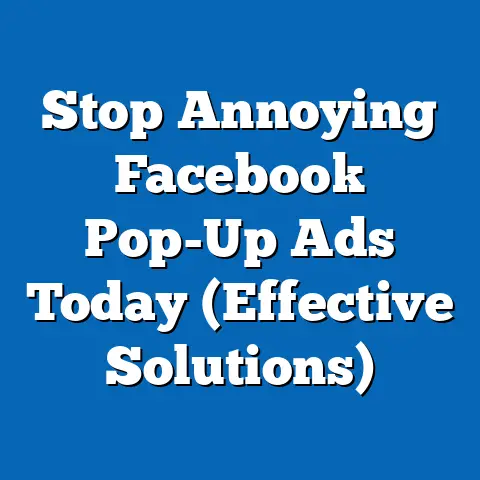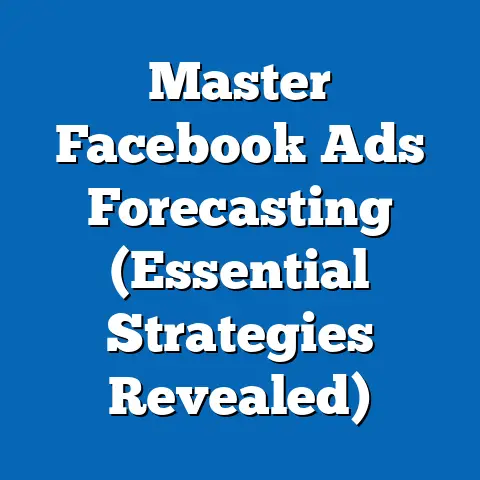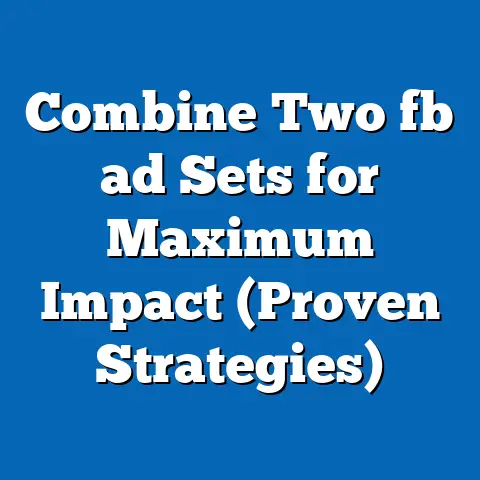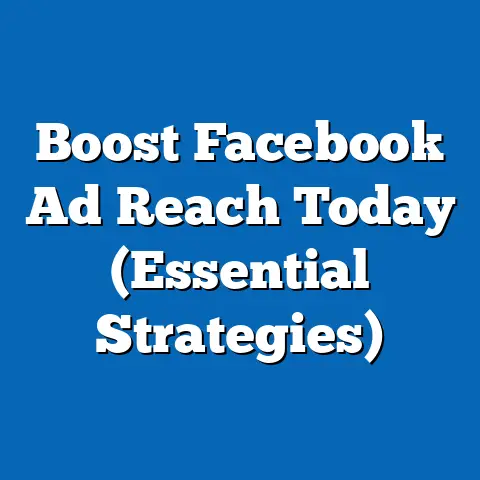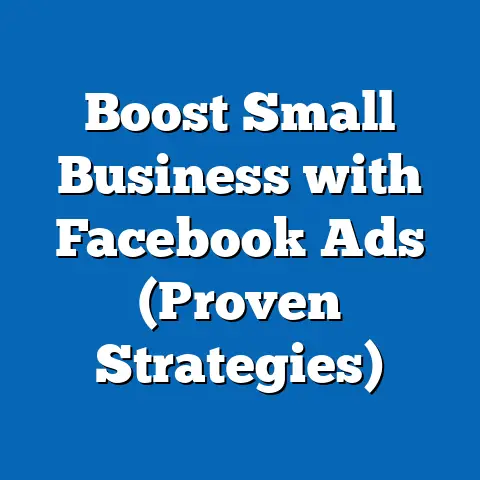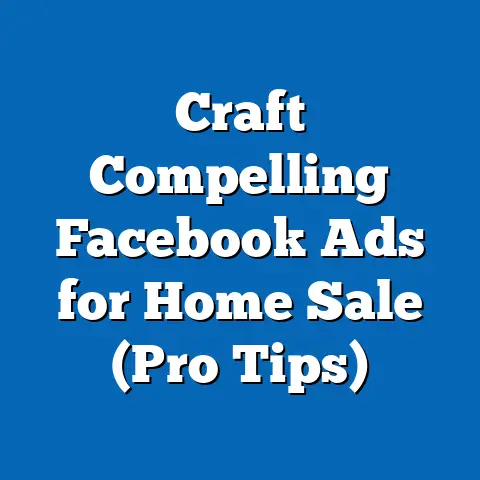Supercharge Leads with Zoho & Facebook Ads (Pro Guide)
In today’s fiercely competitive digital landscape, generating high-quality leads is the lifeblood of any thriving business. It’s not enough to simply exist online; you need to actively attract, engage, and convert potential customers. That’s where innovative marketing strategies leveraging powerful tools like Zoho and Facebook Ads come into play. And believe me, I’ve seen firsthand how a well-executed campaign can transform a business.
I remember working with a small e-commerce startup that was struggling to gain traction. Their website was beautiful, their products were top-notch, but no one knew they existed. We implemented a Facebook Ads strategy, carefully targeting their ideal customer and crafting ads with bold, eye-catching designs. The results? A surge in website traffic, a flood of qualified leads, and ultimately, a significant boost in sales. It was a game-changer for them, and it solidified my belief in the power of combining the right tools with a creative approach.
This guide is your roadmap to achieving similar success. We’ll delve into the art of creating bold, attention-grabbing designs, explore the intricacies of Facebook Ads, and demonstrate how to seamlessly integrate them with Zoho for efficient lead management. Get ready to learn advanced techniques and actionable insights that will supercharge your lead generation efforts and drive your business forward.
Here’s a taste of what you can expect:
- The Power of Bold Designs: Discover how striking visuals and compelling layouts can capture attention and drive conversions.
- Understanding Facebook Ads: Master the fundamentals of Facebook Ads, from targeting options to ad types and objectives.
- Integrating Zoho for Lead Management: Learn how to connect Zoho with Facebook Ads for seamless lead tracking and nurturing.
- Crafting a Winning Campaign: Follow a step-by-step guide to creating a Facebook Ads campaign designed to generate high-quality leads.
- Measuring Success and Optimizing: Analyze your campaign’s performance, identify areas for improvement, and continuously refine your strategy for maximum ROI.
Let’s dive in and unlock the potential of Zoho and Facebook Ads to transform your lead generation efforts!
Section 1: The Power of Bold Designs in Ads
In the digital realm, where attention spans are shorter than ever, your ads have mere seconds to make an impact. That’s where bold designs come in. They’re not just about aesthetics; they’re about grabbing attention, conveying your message effectively, and ultimately, driving conversions.
What Constitutes a “Bold Design”?
A bold design isn’t just about being loud or flashy. It’s about making a statement. It’s about using design elements in a deliberate and impactful way to cut through the noise and capture the viewer’s attention. Here’s what I consider the key ingredients:
- Striking Visuals: High-quality images or videos that are visually appealing and relevant to your target audience. Think vibrant colors, dynamic compositions, and compelling storytelling.
- Intentional Color Schemes: Using color psychology to evoke specific emotions and create a visual hierarchy. A well-chosen color palette can instantly communicate your brand’s personality and values.
- Strategic Typography: Choosing fonts that are both legible and visually appealing. Bold fonts can be used to highlight key messages and create a sense of urgency.
- Clean and Concise Layout: A well-organized layout that guides the viewer’s eye through the ad. Avoid clutter and ensure that your key message is easily understood.
- Unexpected Elements: Incorporating unique elements that challenge the norm and spark curiosity. This could be anything from unconventional illustrations to interactive features.
The Psychological Impact of Bold Designs
Our brains are wired to respond to visual stimuli. Bold designs tap into this innate response, triggering emotions and creating a lasting impression. Studies have shown that visuals are processed 60,000 times faster than text, making them a powerful tool for capturing attention.
Think about it: you’re scrolling through your Facebook feed, bombarded with countless posts and ads. What makes you stop and take notice? It’s often the ads with the most visually appealing and intriguing designs. These ads stand out from the crowd, pique your curiosity, and encourage you to learn more.
I remember a campaign we ran for a local coffee shop. We used a bold, close-up shot of a steaming cup of coffee, with the tagline “Your Morning Just Got Better.” The image was so enticing that people couldn’t help but click. We saw a significant increase in foot traffic to the coffee shop, all thanks to the power of a well-designed ad.
Examples of Successful Bold Designs in Facebook Ads
Let’s take a look at some examples of Facebook Ads that effectively utilize bold design principles:
- Nike: Nike’s ads often feature striking images of athletes in action, showcasing their products in a dynamic and visually appealing way. They use bold typography and impactful color schemes to reinforce their brand identity.
- Airbnb: Airbnb’s ads frequently feature stunning photos of unique and desirable travel destinations. They use high-quality imagery to evoke a sense of wanderlust and inspire viewers to book their next adventure.
- Dollar Shave Club: Dollar Shave Club’s ads are known for their humorous and unconventional approach. They use bold, quirky visuals and witty copy to capture attention and differentiate themselves from their competitors.
These examples demonstrate that bold designs can take many forms, but they all share a common goal: to grab attention, convey a message effectively, and drive conversions.
Enhancing Brand Identity with Bold Designs
Bold designs aren’t just about attracting attention; they’re also about reinforcing your brand identity. By consistently using specific design elements, such as color schemes, typography, and imagery, you can create a visual language that is instantly recognizable and associated with your brand.
I always advise my clients to develop a comprehensive brand style guide that outlines their visual identity. This guide should include specific guidelines for color palettes, fonts, imagery, and logo usage. By adhering to these guidelines, you can ensure that all of your marketing materials, including your Facebook Ads, are consistent and reinforce your brand identity.
Key Takeaways:
- Bold designs are essential for capturing attention and driving conversions in the crowded digital landscape.
- Key elements of bold design include striking visuals, intentional color schemes, strategic typography, and a clean layout.
- Bold designs can enhance brand identity by creating a consistent visual language that is associated with your brand.
Next Steps:
- Analyze your current Facebook Ads and identify areas where you can incorporate bolder design elements.
- Develop a brand style guide to ensure consistency across all of your marketing materials.
- A/B test different design variations to see what resonates best with your target audience.
Section 2: Understanding Facebook Ads
Facebook Ads are a powerful tool for reaching a massive audience and driving targeted results. With its sophisticated targeting capabilities and diverse ad formats, Facebook Ads can help businesses of all sizes achieve their marketing goals. But to truly harness its power, you need to understand the fundamentals.
Overview of Facebook Ads
Facebook Ads are paid advertisements that appear on Facebook, Instagram, Messenger, and the Audience Network. They allow businesses to reach specific audiences based on demographics, interests, behaviors, and more.
Here’s a breakdown of the key components of a Facebook Ad:
- Campaign Objective: The goal you want to achieve with your ad campaign, such as brand awareness, lead generation, or website conversions.
- Target Audience: The specific group of people you want to reach with your ad, based on demographics, interests, behaviors, and more.
- Ad Placement: The location where you want your ad to appear, such as Facebook News Feed, Instagram Feed, or Messenger Inbox.
- Ad Creative: The visual and textual content of your ad, including images, videos, headlines, and descriptions.
- Budget and Schedule: The amount of money you’re willing to spend on your ad campaign and the duration of time you want it to run.
Types of Facebook Ads and Their Objectives
Facebook offers a variety of ad formats, each designed to achieve specific marketing objectives. Here are some of the most popular ad types:
- Image Ads: Simple ads featuring a single image and accompanying text. Ideal for building brand awareness and showcasing products.
- Video Ads: Engaging ads featuring video content. Great for telling stories, demonstrating products, and capturing attention.
- Carousel Ads: Ads that allow users to scroll through multiple images or videos. Perfect for showcasing a range of products or highlighting different features.
- Collection Ads: Ads that feature a catalog of products, allowing users to browse and purchase directly from the ad. Ideal for e-commerce businesses.
- Lead Ads: Ads that allow users to submit their contact information directly from the ad, without being redirected to a landing page. Great for generating leads and building your email list.
Choosing the right ad type depends on your specific marketing objectives and target audience. For example, if you’re trying to generate leads, a Lead Ad would be a more effective choice than an Image Ad.
Facebook’s Targeting Capabilities
One of the biggest advantages of Facebook Ads is its sophisticated targeting capabilities. Facebook allows you to reach specific audiences based on a wide range of factors, including:
- Demographics: Age, gender, location, education, and job title.
- Interests: Hobbies, passions, and activities that people are interested in.
- Behaviors: Actions that people take on Facebook and Instagram, such as liking pages, joining groups, and making purchases.
- Custom Audiences: Lists of existing customers or website visitors that you can upload to Facebook and target with your ads.
- Lookalike Audiences: Audiences that are similar to your existing customers or website visitors.
By carefully targeting your ads, you can ensure that they are seen by the people who are most likely to be interested in your products or services. This can significantly improve your ad performance and ROI.
I remember working with a local bakery that wanted to promote their new line of gluten-free pastries. We used Facebook’s targeting capabilities to reach people who were interested in gluten-free diets and healthy eating. The results were fantastic. We saw a significant increase in sales of their gluten-free pastries, all thanks to the power of targeted advertising.
The Importance of A/B Testing
A/B testing, also known as split testing, is the process of comparing two versions of an ad to see which one performs better. This is a crucial step in optimizing your ad campaigns and ensuring that you’re getting the best possible results.
When A/B testing, you should only change one element at a time. This allows you to isolate the impact of that specific element on your ad performance. For example, you could test two different headlines, two different images, or two different call-to-action buttons.
Bold designs can play a significant role in A/B testing. You can test different design variations to see which one resonates best with your target audience. This could include testing different color schemes, typography, or imagery.
I always recommend that my clients continuously A/B test their Facebook Ads. This allows them to identify what works best for their target audience and continuously improve their ad performance.
Creating Compelling Ad Copy
Your ad copy is just as important as your ad design. It’s what tells people what your ad is about and encourages them to take action. Here are some tips for creating compelling ad copy:
- Know your audience: Tailor your copy to the specific interests and needs of your target audience.
- Highlight the benefits: Focus on the benefits that your products or services offer, rather than just listing their features.
- Use strong verbs and action words: Encourage people to take action by using strong verbs and action words.
- Create a sense of urgency: Encourage people to act now by creating a sense of urgency.
- Include a clear call-to-action: Tell people exactly what you want them to do, such as “Learn More,” “Shop Now,” or “Sign Up.”
Your ad copy should complement your bold designs, working together to create a cohesive and compelling message.
Key Takeaways:
- Facebook Ads are a powerful tool for reaching a massive audience and driving targeted results.
- Understanding the different ad types and their objectives is crucial for creating effective campaigns.
- Facebook’s sophisticated targeting capabilities allow you to reach specific audiences based on a wide range of factors.
- A/B testing is essential for optimizing your ad campaigns and ensuring that you’re getting the best possible results.
- Compelling ad copy is just as important as ad design.
Next Steps:
- Familiarize yourself with the different ad types and their objectives.
- Explore Facebook’s targeting capabilities and identify your ideal target audience.
- Start A/B testing your ads to see what resonates best with your target audience.
- Craft compelling ad copy that complements your bold designs.
Section 3: Integrating Zoho for Lead Management
Zoho is a comprehensive suite of business applications designed to streamline your operations and boost your bottom line. Among its many offerings, Zoho CRM stands out as a powerful tool for managing leads, nurturing relationships, and closing deals. When integrated with Facebook Ads, Zoho CRM becomes an even more potent force for lead generation and business growth.
Zoho as a Comprehensive CRM Solution
Zoho CRM is more than just a contact database. It’s a complete customer relationship management system that helps you:
- Centralize your data: Store all your customer information in one place, including contact details, interactions, and purchase history.
- Automate your processes: Automate repetitive tasks like lead assignment, email marketing, and follow-up reminders.
- Track your progress: Monitor your sales pipeline, track key metrics, and identify areas for improvement.
- Personalize your interactions: Deliver personalized experiences to your customers based on their individual needs and preferences.
- Collaborate effectively: Enable your sales and marketing teams to collaborate effectively and share information seamlessly.
I’ve seen countless businesses transform their sales processes with Zoho CRM. It’s a game-changer for organization, efficiency, and ultimately, revenue.
Integrating Zoho with Facebook Ads
Integrating Zoho with Facebook Ads allows you to seamlessly capture and manage leads generated from your ad campaigns. This eliminates the need for manual data entry and ensures that all your leads are automatically added to your Zoho CRM database.
Here’s how it works:
- Connect your Facebook Ads account to Zoho CRM: This allows Zoho CRM to access your Facebook Ads data and capture leads generated from your campaigns.
- Create a lead capture form in Zoho CRM: This form will be used to collect contact information from your leads.
- Link your lead capture form to your Facebook Ad: This ensures that when someone fills out the form on your Facebook Ad, their information is automatically added to your Zoho CRM database.
Setting Up Lead Capture Forms Through Zoho
Setting up lead capture forms in Zoho CRM is a simple and straightforward process. Here’s a step-by-step guide:
- Log in to your Zoho CRM account.
- Navigate to the “Leads” module.
- Click on the “Create” button.
- Customize your lead capture form: Add the fields you want to collect from your leads, such as name, email address, phone number, and company name.
- Design your lead capture form: Choose a visually appealing design that aligns with your brand identity.
- Publish your lead capture form: Once you’re happy with your form, publish it and generate a unique URL.
Linking Zoho Forms with Facebook Ads
Once you’ve created and published your lead capture form in Zoho CRM, you need to link it to your Facebook Ad. Here’s how:
- Create a Lead Ad in Facebook Ads Manager.
- In the Lead Ad creation process, select “Use a CRM” as your lead form option.
- Choose Zoho CRM from the list of available CRMs.
- Map the fields in your Facebook Lead Ad form to the corresponding fields in your Zoho CRM lead capture form. This ensures that the data collected from your Facebook Ad is accurately transferred to your Zoho CRM database.
Using Zoho’s Analytics to Measure Ad Performance
Zoho CRM provides powerful analytics tools that allow you to measure the performance of your Facebook Ads and optimize your lead generation efforts. You can track key metrics such as:
- Lead volume: The number of leads generated from your Facebook Ads.
- Conversion rate: The percentage of leads that convert into customers.
- Cost per lead: The amount of money you’re spending to generate each lead.
- Return on ad spend (ROAS): The amount of revenue you’re generating for every dollar you spend on Facebook Ads.
By analyzing these metrics, you can identify which Facebook Ads are performing well and which ones need improvement. You can then make data-driven decisions to optimize your campaigns and maximize your ROI.
I always tell my clients that data is their best friend. By tracking and analyzing their ad performance, they can identify what’s working and what’s not, and make informed decisions to improve their results.
Key Takeaways:
- Zoho CRM is a comprehensive solution for managing leads, nurturing relationships, and closing deals.
- Integrating Zoho CRM with Facebook Ads allows you to seamlessly capture and manage leads generated from your ad campaigns.
- Setting up lead capture forms in Zoho CRM is a simple and straightforward process.
- Zoho CRM provides powerful analytics tools that allow you to measure the performance of your Facebook Ads and optimize your lead generation efforts.
Next Steps:
- If you’re not already using Zoho CRM, sign up for a free trial and explore its features.
- Integrate your Zoho CRM account with your Facebook Ads account.
- Create a lead capture form in Zoho CRM and link it to your Facebook Ads.
- Start tracking your ad performance using Zoho’s analytics tools.
Section 4: Crafting a Winning Facebook Ad Campaign with Zoho
Now that you understand the power of bold designs, the intricacies of Facebook Ads, and the benefits of integrating with Zoho, let’s put it all together and create a winning Facebook Ad campaign designed to generate high-quality leads.
This section will provide a step-by-step guide to creating a Facebook Ads campaign aimed at lead generation. I’ll walk you through each step of the process, from defining your campaign goals to setting up Zoho for capturing and managing leads.
Step 1: Defining Campaign Goals
The first step in creating a successful Facebook Ad campaign is to define your campaign goals. What do you want to achieve with your ad campaign? Are you looking to generate leads, build brand awareness, or drive website conversions?
Your campaign goals should be specific, measurable, achievable, relevant, and time-bound (SMART). For example, a SMART goal for a lead generation campaign might be:
“Generate 100 qualified leads in the next 30 days, with a cost per lead of no more than $10.”
Having a clear and well-defined goal will help you stay focused and track your progress.
Step 2: Audience Targeting Strategies
Once you’ve defined your campaign goals, the next step is to identify your target audience. Who are you trying to reach with your ad campaign?
Facebook offers a variety of targeting options, allowing you to reach specific audiences based on demographics, interests, behaviors, and more. Here are some of the most effective audience targeting strategies:
- Core Audiences: Target people based on demographics, interests, and behaviors.
- Custom Audiences: Upload a list of existing customers or website visitors to Facebook and target them with your ads.
- Lookalike Audiences: Create an audience that is similar to your existing customers or website visitors.
When choosing your target audience, consider the following factors:
- Demographics: Age, gender, location, education, and job title.
- Interests: Hobbies, passions, and activities that people are interested in.
- Behaviors: Actions that people take on Facebook and Instagram, such as liking pages, joining groups, and making purchases.
By carefully targeting your ads, you can ensure that they are seen by the people who are most likely to be interested in your products or services.
Step 3: Designing Bold Ads
Now comes the fun part: designing your Facebook Ads! Remember, your ads need to be visually appealing and attention-grabbing to stand out from the crowd. Here are some tips for designing bold ads:
- Use high-quality images or videos: Your visuals should be clear, crisp, and relevant to your target audience.
- Choose a visually appealing color scheme: Use color psychology to evoke specific emotions and create a visual hierarchy.
- Use strategic typography: Choose fonts that are both legible and visually appealing.
- Create a clean and concise layout: Avoid clutter and ensure that your key message is easily understood.
- Include a clear call-to-action: Tell people exactly what you want them to do, such as “Learn More,” “Shop Now,” or “Sign Up.”
Here are a few examples of bold ad designs:
- Example 1: A local gym uses a high-quality image of a fit and healthy person working out. The ad copy highlights the benefits of joining the gym and includes a call-to-action to “Sign Up for a Free Trial.”
- Example 2: An e-commerce store uses a carousel ad to showcase a range of products. Each product is featured in a visually appealing image, and the ad copy includes a brief description and a call-to-action to “Shop Now.”
- Example 3: A software company uses a video ad to demonstrate their product. The video is engaging and informative, and the ad copy includes a call-to-action to “Learn More.”
Remember to A/B test different ad designs to see what resonates best with your target audience.
Step 4: Setting Up Zoho for Lead Capture
Before you launch your Facebook Ad campaign, you need to set up Zoho for capturing and managing leads. This involves creating a lead capture form in Zoho CRM and linking it to your Facebook Ad, as described in Section 3.
Make sure that your lead capture form includes all the fields you want to collect from your leads, such as name, email address, phone number, and company name.
Step 5: Budgeting and Scheduling
The final step is to set your budget and schedule your ads. How much money are you willing to spend on your ad campaign, and how long do you want it to run?
Facebook offers a variety of budgeting options, including:
- Daily Budget: The average amount you’re willing to spend each day.
- Lifetime Budget: The total amount you’re willing to spend over the entire duration of your campaign.
When choosing your budget, consider the following factors:
- Your campaign goals: How many leads do you want to generate?
- Your target audience: How large is your target audience?
- Your cost per lead: How much are you willing to spend to generate each lead?
You should also schedule your ads to run during the times when your target audience is most active on Facebook.
I always recommend starting with a small budget and gradually increasing it as you see results. This allows you to test your ads and optimize your campaigns without risking a lot of money.
Key Takeaways:
- Creating a winning Facebook Ad campaign involves defining your campaign goals, targeting your audience, designing bold ads, setting up Zoho for lead capture, and budgeting and scheduling your ads.
- Remember to A/B test different ad designs and targeting options to see what resonates best with your target audience.
- Start with a small budget and gradually increase it as you see results.
Next Steps:
- Define your campaign goals.
- Identify your target audience.
- Design bold and attention-grabbing ads.
- Set up Zoho for lead capture.
- Budget and schedule your ads.
Section 5: Measuring Success and Optimizing Campaigns
Launching your Facebook Ad campaign is just the beginning. The real work begins when you start measuring your results and optimizing your campaigns for maximum performance.
This section will discuss key performance indicators (KPIs) for evaluating the success of Facebook Ads in generating leads, explain how to use Zoho’s reporting tools to analyze lead data effectively, and provide strategies for optimizing ongoing campaigns based on data insights.
Key Performance Indicators (KPIs)
KPIs are metrics that help you track your progress and measure the success of your campaigns. Here are some of the most important KPIs for evaluating the success of Facebook Ads in generating leads:
- Leads Generated: The total number of leads generated from your Facebook Ads.
- Cost Per Lead (CPL): The amount of money you’re spending to generate each lead.
- Conversion Rate: The percentage of leads that convert into customers.
- Click-Through Rate (CTR): The percentage of people who see your ad and click on it.
- Return on Ad Spend (ROAS): The amount of revenue you’re generating for every dollar you spend on Facebook Ads.
By tracking these KPIs, you can get a clear picture of how your campaigns are performing and identify areas for improvement.
Using Zoho’s Reporting Tools
Zoho CRM provides powerful reporting tools that allow you to analyze your lead data effectively. You can track key metrics such as:
- Lead Source: Where your leads are coming from (e.g., Facebook Ads, website, referrals).
- Lead Stage: Where your leads are in the sales pipeline (e.g., prospect, qualified lead, opportunity).
- Conversion Rate: The percentage of leads that convert into customers at each stage of the sales pipeline.
- Average Deal Size: The average value of the deals that you’re closing.
By analyzing this data, you can identify which lead sources are generating the most qualified leads, which stages of the sales pipeline are causing bottlenecks, and which sales reps are performing the best.
Optimizing Campaigns Based on Data Insights
Based on the data you collect from Facebook Ads and Zoho CRM, you can optimize your campaigns for maximum performance. Here are some strategies for optimizing your campaigns:
- Adjust your targeting: If your ads aren’t reaching the right people, you may need to adjust your targeting options.
- Refine your ad designs: If your ads aren’t getting enough clicks, you may need to refine your ad designs.
- Improve your landing pages: If your leads aren’t converting into customers, you may need to improve your landing pages.
- Optimize your sales process: If your sales team isn’t closing enough deals, you may need to optimize your sales process.
Remember, optimization is an ongoing process. You should continuously track your results and make adjustments to your campaigns as needed.
I always tell my clients that optimization is a marathon, not a sprint. It takes time and effort to fine-tune your campaigns and achieve optimal results.
Real-World Examples
Let’s take a look at some real-world examples of businesses that improved their lead generation through data-driven optimizations:
- Example 1: A local restaurant tracked their lead source and discovered that Facebook Ads were generating the most qualified leads. They increased their budget for Facebook Ads and saw a significant increase in sales.
- Example 2: An e-commerce store analyzed their website traffic and discovered that their landing pages were not converting well. They redesigned their landing pages and saw a significant increase in conversions.
- Example 3: A software company analyzed their sales process and discovered that their sales reps were spending too much time on unqualified leads. They implemented a lead scoring system and saw a significant increase in sales.
These examples demonstrate that data-driven optimizations can have a significant impact on your lead generation efforts.
Key Takeaways:
- Measuring success and optimizing campaigns is an ongoing process that requires continuous tracking, analysis, and refinement.
- Key performance indicators (KPIs) are metrics that help you track your progress and measure the success of your campaigns.
- Zoho CRM provides powerful reporting tools that allow you to analyze your lead data effectively.
- Data-driven optimizations can have a significant impact on your lead generation efforts.
Next Steps:
- Track your KPIs on a regular basis.
- Analyze your lead data using Zoho’s reporting tools.
- Identify areas for improvement and implement data-driven optimizations.
- Continuously track your results and make adjustments to your campaigns as needed.
Conclusion
We’ve covered a lot of ground in this guide, from the power of bold designs to the intricacies of Facebook Ads and the benefits of integrating with Zoho. By now, you should have a solid understanding of how to supercharge your lead generation efforts using these powerful tools.
Remember, the key to success is to combine bold designs with strategic targeting, seamless lead management, and data-driven optimization. By following the steps outlined in this guide, you can create a winning Facebook Ad campaign that generates high-quality leads and drives your business forward.
The synergistic effect of combining these elements is undeniable. Bold designs capture attention, Facebook Ads target the right audience, and Zoho CRM manages the leads effectively, creating a powerful engine for lead generation.
I encourage you to take action and implement the strategies outlined in this guide. Start by analyzing your current lead generation efforts and identifying areas for improvement. Then, begin experimenting with bold designs, refining your targeting options, and integrating your Facebook Ads with Zoho.
Don’t be afraid to test new ideas and learn from your mistakes. The more you experiment, the better you’ll become at creating effective Facebook Ad campaigns that generate high-quality leads.
The digital landscape is constantly evolving, so it’s important to stay up-to-date with the latest trends and best practices. Continue learning and experimenting, and you’ll be well on your way to supercharging your lead generation efforts and achieving your business goals.
So, go out there and create some bold ads, target your ideal audience, and start generating those leads! I’m confident that with the right tools and strategies, you can achieve amazing results. Good luck!

